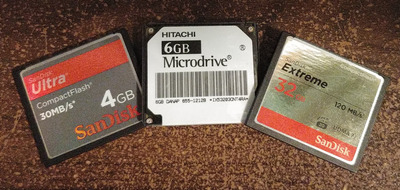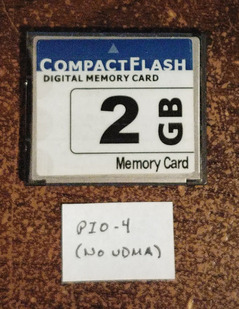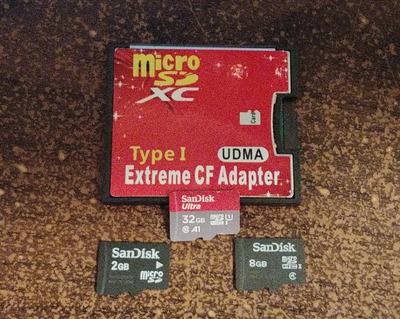First post, by Kahenraz
- Rank
- l33t
My go-to disk for testing is a crummy unbranded 2GB CompactFlash card. Why? It only supports PIO4 and no UDMA which means it works almost anywhere. This is useful to avoid issues related to problems caused by bugs in UDMA handling. Usually the limitation I encounter is with disk sizes. But in this case it was the BIOS and/or the onboard IDE controller rejecting all of my UDMA CompactFlash cards.
When testing these are the sizes I will usually try (along with a 128GB):
Here is the generic flash card that has always worked great at anything I've thrown at it:
This gives me a decent range of sizes and supported features. But this motherboard wouldn't work with any of them. And I wasn't happy about being stuck with a small disk on a Socket 7 with slow PIO4 speeds.
I prefer to use native CompactFlash for IDE but sometimes it's useful to fall back on an adapter specifically for its limitations. I've tried many Micro/SD->CompactFlash adapters over the years and all of them have failed to translate the speed of any of the fast SD cards due to the limitation that they only support at most UDMA mode 1 (25MB/s). In this case it is actually useful to have such a limitation as it allows the pairing of large SD cards without the risk of rejection from the BIOS.
Using an adapter I was able to successfully boot with up to a 32GB SD card with speeds 5x that of PIO4.
I prefer to use CompactFlash to replace IDE drives as they understand how to speak this protocol natively and will always produce the fastest speed up to the capabilities of the IDE controller or the limits of the flash card. Using serial SD cards for parallel IDE controllers has always been suspect to me and I prefer to keep as much "adapting" when it comes to any storage medium to a minimum. But in this case it proved to be useful.


